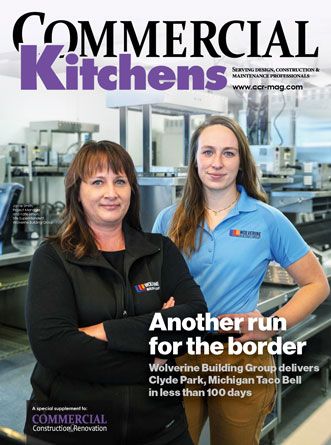Design-build professionals are using superior daylight harvesting methods to improve interior illumination and aesthetics while conserving energy
When architects, engineers, designers, and building owners consider new construction or operational upgrades, effectively using natural daylight to reduce the need for artificial lighting can improve building aesthetics and function while reducing energy costs.
For architects, letting the sunshine in and optimally harvesting natural light can also contribute to attaining LEED-certification on a building by helping to improve efficiency, lower carbon emissions, save money, and create overall healthier environments.
Although windows let in light, incorporating windows alone is not a very effective means of using natural light in a building. Windows are good for providing outdoor views and ventilation, but not the best source of natural lighting since sunlight primarily travels downward rather than sideways.
While utilizing natural lighting or “daylighting” with skylights is more effective, not all options are equal in terms of the look, feel, or length of the illumination.
Fortunately, for anyone in design-build professions, the industry has advanced significantly from simple skylights to prismatic systems to state-of-the-art daylight harvesting technologies that more effectively illuminate interior spaces than ever before. Today, picking the optimum light harvesting tool has a dramatic impact on both the ambiance and extent of the interior space lighting and can contribute to a building’s energy savings and LEED-certification.
“Modern daylighting techniques can not only help architectural design projects stand out aesthetically and save energy but also gain LEED certification when combined with other conservation efforts,” says Kenneth Schlabach, Owner of Campbell Hill, IL-based DayStar Systems a natural daylighting skylight provider for applications in commercial properties, showrooms, offices, and industrial facilities throughout North America.
Daylighting Advances
Good lighting has always been the architectural design professional’s friend and scientific research shows that natural light—sunlight—may be their very best friend in terms of promoting productivity and even commercial sales.
Artificial light is a problem for perceiving color accurately—something that is crucial to fully appreciate architectural design and building interiors. Personnel working in sunlit environments are happier, more productive and are absent less often than those working for long hours under artificial lights. Even commercial functions like retailing are dramatically enhanced when color is perceived accurately. In stores, product colors are more attractive under warm natural lighting that enables the true colors to shine through.
“For architectural design professionals, daylighting is crucial because it provides the best color perception available. Commercial activity and sales go up because the product looks better and is seen more accurately. Customers’ color perceptions are directly affected by the full light spectrum. In fact, the only way to see ‘true’ color is in full-spectrum light,” says Schlabach.
Traditional skylights essentially act like windows that allow natural daylight to enter vertically. However, simple skylights can allow excess daylight, glare, and UV to enter a building’s interior space. Since sunlight enters and exits the skylight directly, some areas tend to receive too much light and others too little, resulting in uneven interior lighting. In addition, even when rudimentary skylights use gaskets and deck seals or flashing, there is usually little to no insulation so excess heat or cold outdoors can thermally transfer inside.
Prismatic skylights use thermoplastic sheets with embossed patterns that diffuse sunlight, so it spreads more evenly through a space and reduces its intensity. The approach, however, does not typically have a systematic means of collecting and amplifying sunlight, which can limit the amount of light gathered, particularly during periods of low light such as early morning, later afternoon, or cloudy days.
Similarly, tubular skylights transfer natural sunlight by using a clear dome over a reflective shaft that ends at the building’s ceiling with a sealed diffuser. However, tubular skylights are less effective at illuminating wider interior spaces. In addition, insulation can be relatively minimal between the roof jacket down to the ceiling, which allows outdoor heat or cold to enter the building.
Modern advances in daylighting skylights are now maximizing the collection of natural light, which can extend daylit hours and enhance lighting on cloudy days much better than previous systems. To aid color perception, productivity, commercial activity, and energy use, architectural design professionals are turning to more advanced daylighting skylights like those from DayStar Systems for commercial and industrial applications.
DayStar engineers have developed high-performance skylight systems that capture the sun’s natural light and collect, amplify, and diffuse a broad, even pattern of indoor illumination. This is accomplished using a four-part system. First, sunlight is gathered and diffused through an ultra-clear outer dome and inner collimation lens. The dome is supported by insulated roof curbs of galvalume steel or aluminum continuously welded for watertight seams. Then a light shaft made of insulated panels with highly reflective interior surfaces amplify light as it is captured. The extra insulation provides higher thermal values, minimizing heat loss and heat gain. And finally, an attractive ceiling lens, engineered to diffuse highly concentrated light into a broad lighting pattern, is installed on the interior ceiling.
The company’s light-harvesting method extends daylit hours every day of the year by collecting and dispersing more natural light during early mornings and late afternoons than any other daylighting system. With the reflective shaft, even on a cloudy day, the high-performance skylights collect more diffused light and distribute it more evenly with just the dome system. The result is superior illumination with little to no need for electric lights.
The daylighting skylights are easy to install and come with detailed instructions and all the materials required, so can be incorporated even at later stages of a building project.
As architects and design professionals seek to create more eco-friendly yet dramatic commercial spaces to work, shop, and live, modern daylighting skylights will become an increasingly important tool that they can rely on. Harnessing renewable and free natural light not only makes the building’s interior space more inviting, but also cuts the cost of generating artificial lighting and reduces collateral expenses as well.
For more information on natural daylighting systems, visit www.daystarskylightsystem.com; email info@daystar1.com or call (618) 426-1868.
By Del Williams
Del Williams is a technical writer based in Torrance, California.










 The 2024 virtual Men’s Round Table will be held Q4, 2024, date TBD.
The 2024 virtual Men’s Round Table will be held Q4, 2024, date TBD.











